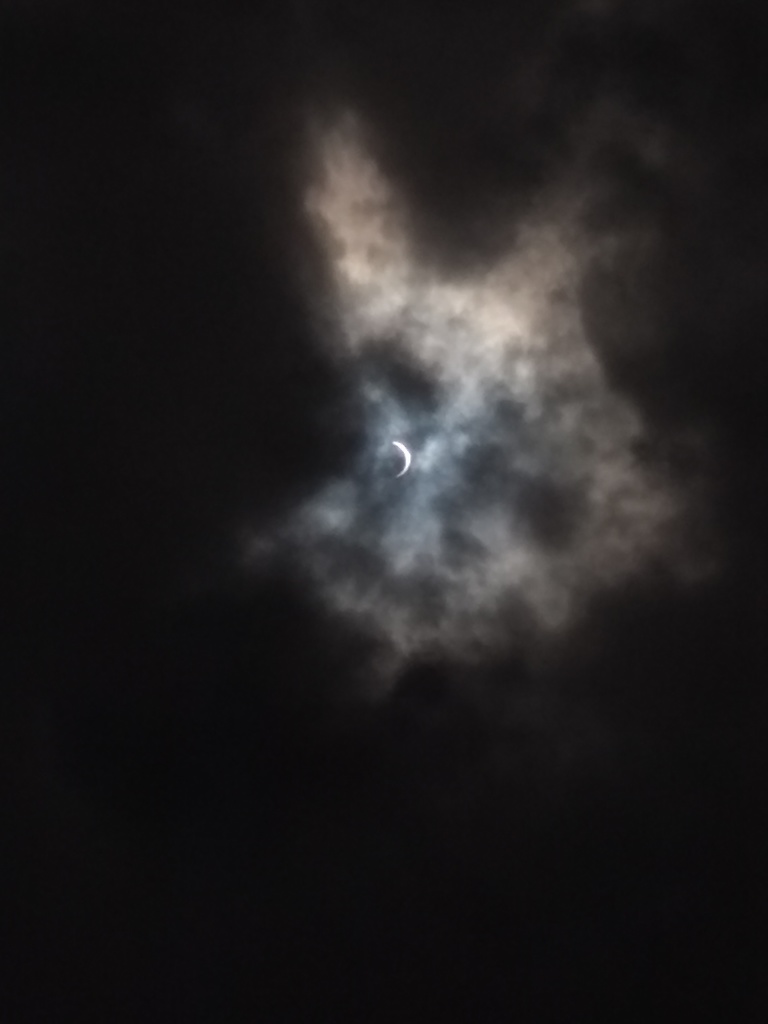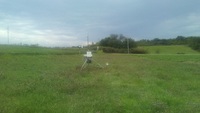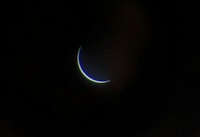On August 21, 2017, On August 21, 2017, the shadow of the moon crossed over Northeastern Kansas and the Kansas Mesonet recorded the event. Unfortunately, the weather wasn't ideal. Broken clouds dominated much of the state throughout the day. Solid cloud cover was the rule at Hiawatha at the point of totality. Still, the change in solar radiation was dramatic.
Below, you can compare the global radiation across the day and the region, as well as view an archive of images and download the 1 minute data for the six stations closest to the path of totality.
|
View Full Gallery
| 01:11 PM  credit:Gaige Jacobus Manhattan | 12:50 PM  credit:Mary Knapp Hiawatha | 01:00 PM  credit:James Knapp Seneca | 01:05 PM credit:Dan Regier Marysville |
View Full Gallery
|
Using this page
Map: Clicking or tapping a station on the map will display data on the chart for that station.
Timeline: Use the buttons or slider below to watch the progression of the moon's shadow. The chart is dynamically updated as you change the time.
Download Data
What is Solar Radiation?
According the The American Meteorological Society, solar radiation is defined as the total electromagnetic radiation emitted by the sun. About one-half of the total energy in the solar beam is contained within the visible spectrum from 0.4 to 0.7 μm, and most of the other half lies in the near-infrared, a small additional portion lying in the ultraviolet.
The pyranometer used in the mesonet measures global solar radiation. That is the total solar radiation, direct and diffuse, measured on a horizontal surface.
Clear Sky vs. Observed
Clear sky solar radiation is the theoretical incoming radiation without any cloud interference or reflection. The model used on this page comes from the Department of Energy.
Observed radiation, on the other hand, shows what our pyranometer actually measured. Since Northeastern Kansas had partly to mostly cloudy skies, the observed radiation fluctuates wildly. Radiation is diminished by clouds blocking the sun and returns to normal when the clouds move away. Click here for a comparison of solar radiation on clear and cloudy days.
In some cases, the incoming radiation it can actually exceed clear sky levels when adjacent clouds reflect additional radiation toward the pyranometer. See the Resources section for further information on comparing clear sky models to observed radiation.
How Does an Eclipse Affect Solar Radiation?
As the moon's shadow covered the solar disk, the total global radiation showed a sharp decline. This reached nearly zero at full coverage. In theory, some radiation should have been measureable, as not all infrared and ultraviolet radiation was blocked. As the moon's shadow retreated, there was a sharp rebound in the incoming radiation. This was particularly dramatic as the totality occurred close to solar noon.
How Does an Eclipse Affect Air Temperature?
According to NASA, it would probably be equal to the typical daytime minus nighttime temperature difference at that time of year and location on the Earth. It would be modified a bit by the fact that it only lasts a few minutes, which means the environment would not have much time to thermally respond to its lowest temperature, so it would probably only be 3/4 or 1/2 the maximum day-night temperature difference.
At Hiawatha, the normal high temperature on August 21st is 86 °F; the normal low is 62 °F, giving a diurnal swing of 24 degrees. That would indicate an eclipse-altered temperature of 12 - 18 degrees. Because the patch of the shadow travels faster than the speed of sound, weather systems would only be affected very locally directly under the instantaneous footprint of the eclipse.
The main effect is in the "radiant heating" component which goes away suddenly at the moment of eclipse and produces a very fast temperature decrease. Several observers mentioned a noticeable cooling of the ambient temperature. If the wind was blowing, your body probably exaggerated, by evaporative cooling, how large the actual temperature swing really was.
Resources
Clear Sky Model
Global radiation models, including the effect of clouds on observations
NASA Eclipse Page
Space.com Eclipse Page
Stations - Follow links to view station photos
Clay
Hiawatha
Manhattan
Olathe
Silver Lake
Washington
30' Tower Station Diagram
6' Tripod Station Diagram